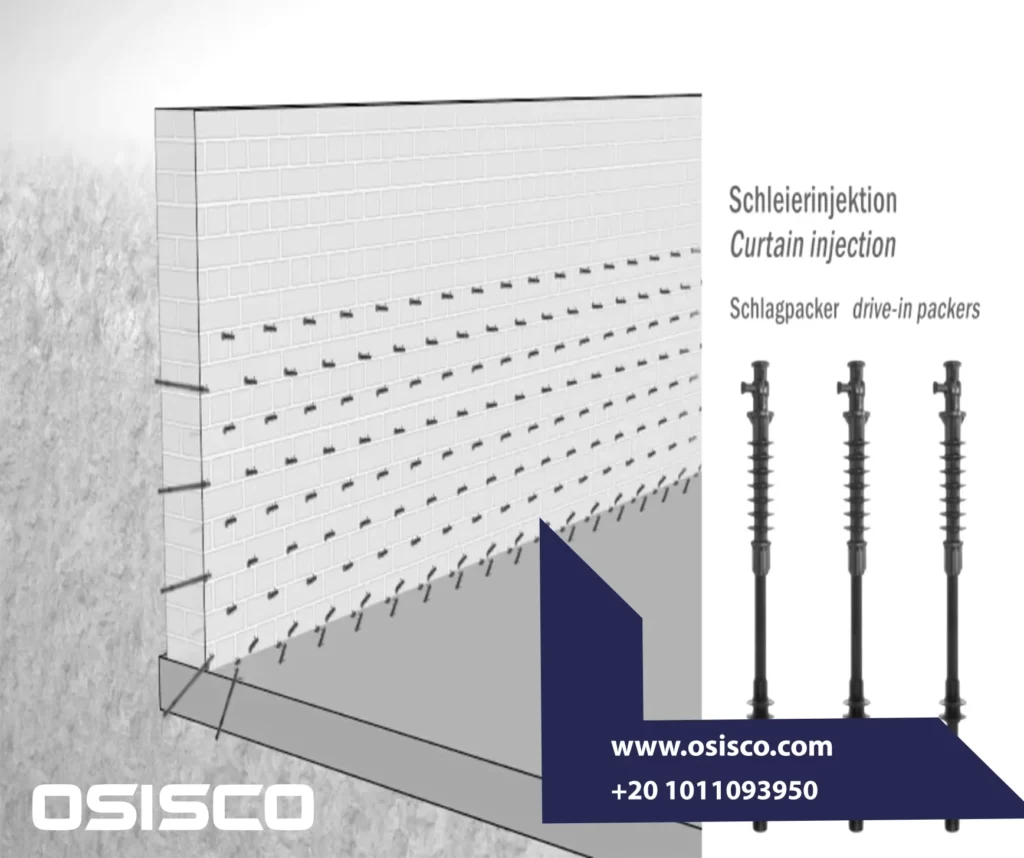
Curtain injections are used for the post-construction sealing of structural elements with ground contact affected by moisture.
Curtain injections are suitable for restoring basements, shafts, canals, and tunnels. It is mainly used if the structural elements concerned cannot be sealed from the outside, or if this is not possible without disproportionate costs or effort.
Curtain injections prevent moisture penetration
If structural elements are not watertight, inadequately designed external sealants can be responsible for this. Other possible causes are aging processes of existing sealants, fluctuating groundwater levels, or movements within the structural element.
Water penetrates the building through voids, joints, and defective sealants in the building and soaks the structure. For that, injection is sealed sufficiently and permanently by techniques known as curtain and bladder injection.
Sealing structural elements with ground contact
Traditional methods of subsequently sealing structural elements with ground contact against moisture can be very time-consuming and costly.
The surfaces to be sealed must be laid bare, which detrimentally affects the surrounding infrastructure.
The reconstruction work is particularly problematic if adjacent areas of the building site cannot be used properly because of their location or because they are highly frequented.
In many cases, conventional exterior sealants cannot be put into place for structural reasons. Curtain injections make cost‑effective solutions possible with difficult reconstructions of buildings.
Curtain injections
Curtain grouting is a specialty waterproofing technique that’s extremely useful for stopping active leaks. It provides a permanent solution to situations where liquid water is flowing through the wall into the structure, and exterior excavation is cost prohibitive.
Purpose of curtain injections
Curtain injections are used for the post-construction sealing of structural elements with ground contact affected by moisture. Curtain injections are suitable for restoring basements, shafts, canals, and tunnels.
Curtain injection also called gel injection is mainly used if the structural elements concerned cannot be sealed from the outside or if this is not possible without disproportionate costs or effort.
The subsequent waterproofing of building components that are not accessible due to neighboring construction or other considerations (such as tunnels, underground parking garages, elevator shafts, or concrete base slabs), is commonly carried out through the waterproofing method referred to as curtain injection.
Application of curtain injection method
- Surface sealing of structural components with ground contact:
- Basements and partial basements.
- Underground parking lots.
- Floor slabs.
- Abutments of bridges and wing walls.
- Tunnel structures.
- Sewer systems and shaft installations.
- Foundation pits.
- Protection from slope water:
- Retaining walls.
- Buildings situated on a slope.
- Joint sealing:
- Expansion joints, especially in defective sheets & tapes.
- Connection joints between old and new buildings.
- Tubing joints.
- Sewer connections.